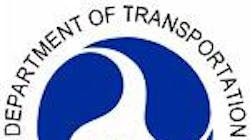New national plan unveiled for American transportation
A clean and historic break with the past is needed to encourage the future vitality of the nation’s transportation network, said United States Transportation Secretary Mary E. Peters on July 29, in unveiling the Bush administration’s new plan to "refocus, reform, and renew" the national approach to highway and transit systems in America.
The plan has a renewed federal focus on maintaining and improving the Interstate highway system instead of diverting funds for programs clearly not federal priority areas—like restoring lighthouses.
Addressing urban congestion and giving greater flexibility to state and local leaders to invest in their most needed transit and highway priorities is another key focus of the reform plan.
As part of this focus on congestion, Peters said the plan would create a Metropolitan Innovation Fund that rewards cities willing to combine a mix of effective transit investments, dynamic pricing of highways, and new traffic technologies.
The plan calls for greatly reducing more than 102 federal transportation programs that have proliferated over the past two decades, replacing them with eight comprehensive, intermodal programs that will help focus—instead of dilute—investments and "cut the dizzying red tape forced upon local planners."
A hallmark of the plan, she said, is a "refocused and redoubled emphasis on safety," using a data and technology-driven approach that also gives states maximum flexibility to tackle their toughest safety challenges.
Peters emphasized that central to any reform for transportation is finding new revenue sources to supplement the unpredictable and unsustainable gas tax—"an antiquated mechanism"—in order to fund maintenance and pay for new needed projects.
More direct pricing options like tolling are needed, she said, and states must be empowered to take advantage of infrastructure investments from the private sector.
"The idea is simple: use federal funds to encourage new sources of investments for transportation instead of replacing them."
View more refrigerated transport business news from Refrigerated Transporter.
